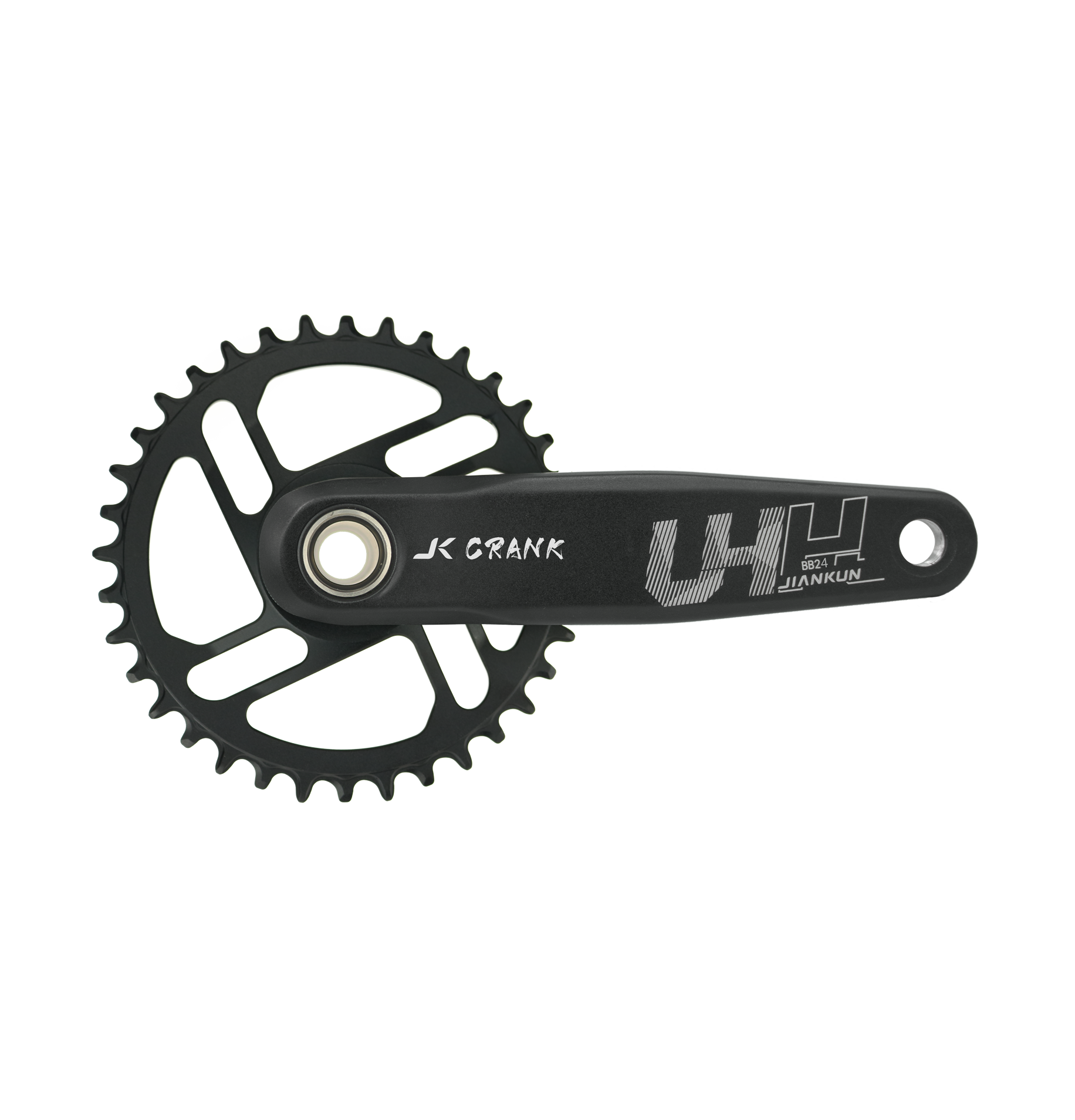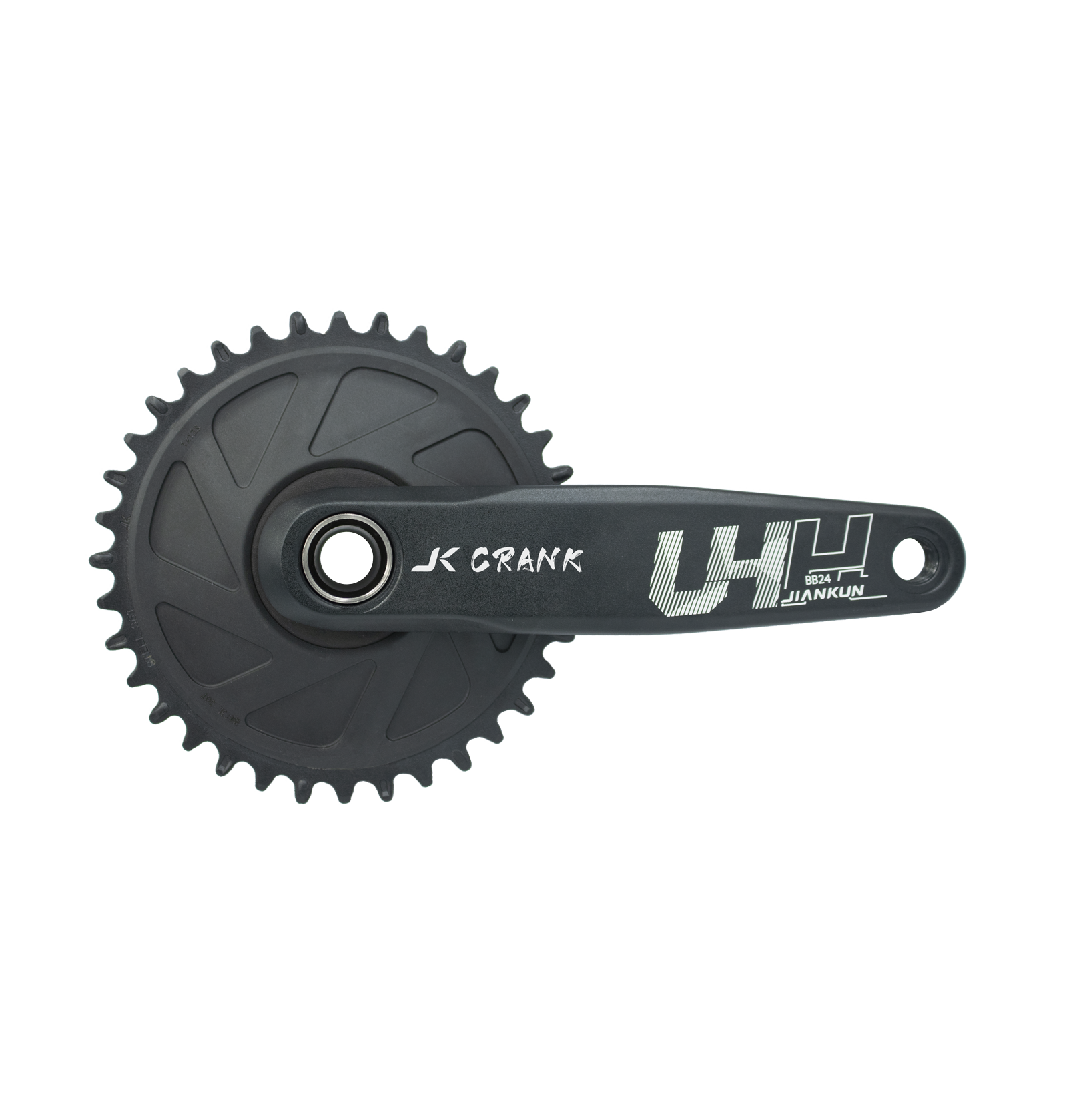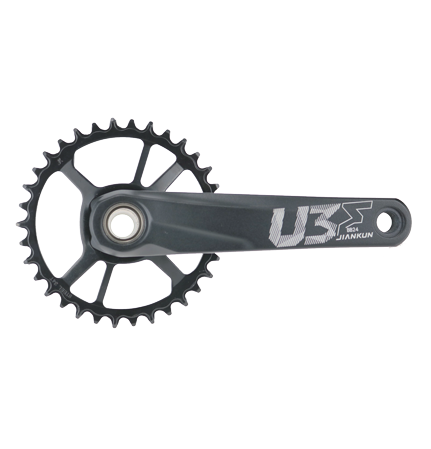Údržba a péče o kolo pedálovací soupravy
Porozumění důležitosti údržby pediváhového soustavu
Pediváhový soubor je klíčovou součástí umístěnou v jádře převodové soustavy kola. Skládá se z důležitých částí, jako jsou pediváhy, řetězové korunky a spodek rámový. Pediváhy spojují pedály s řetězovými korunkami, které následně zapadají do řetězu kola a pohánějí jezdce vpřed. Spodek rámový umožňuje pediváhovému soustavu rotovat volně, což zajišťuje optimální efektivitu šlapání. Každá z těchto součástí spolupracují v souladu, aby přeložily šlapací tahy jezdce v pohyb, což vyžaduje pravidelnou údržbu pro zajištění trvání a výkonu.
Šlapací soustava hraje klíčovou roli při převodu energie šlapání na pohybový impuls. Efektivně pracující šlapací soustava nejenom zlepšuje výkon kola, ale také zvyšuje celkové zážitky jezdce při jízdě na kole. Pokud je šlapací soustava správně udržována, snižuje to odpor a vytrvalostní poškození, čímž poskytuje hladké a nepřetržité šlapání. To se projevuje jednoduššími stoupánky, rychlejšími rychlostmi a příjemnější jízdou. Proto je důležité chápat a udržovat šlapací soustavu pro každého cyklistu, který chce maximalizovat potenciál svého kola. Pravidelné kontroly a časově vhodné opravy mohou zabránit problémům jako jsou kývající se šlapky nebo neefektivní přenos síly, což zajistí spolehlivý výkon při každé jízdě.
Hlavní známky, že potřebujete udržovat šlapací soustavu vašeho kola
Identifikace klíčových ukazatelů, které naznačují, že vaše kolo potřebuje údržbu pedálové soupravy, je zásadní pro optimální výkon. Běžným příznakem je přítomnost neobvyklých zvuků, jako jsou praskání nebo škrábání při tlačení na pedály. Tyto zvuky často naznačují problémy, jako jsou volné součásti, opotřebované ložiska nebo nesprávně zarovnané části pedálové soupravy. Ignorování těchto zvuků může vést ke vážnějším problémům a mohlo by být zapotřebí rozsáhlá oprava, pokud se s tím nepočíná ihned.
Je rovněž důležité kontrolovat kolísání nebo volnost pedálů, což může představovat vážné riziko pro bezpečnost a výkon kola. Pokud zaznamenáte pohyb nebo jakoukoli volnost pedálů, je nutné okamžitě tento problém vyřešit, aby se zabránilo mechanickým selháním. Statistiky ukazují, že velké množství nehod spojených s koly a jejich selhání je důsledkem nedbalé údržby, což vedlo ke katastrofálním výsledkům, které byly možné předcházet. Pravidelné kontroly a okamžité utažení volných pedálů mohou tyto rizika významně snížit.
Dalším klíčovým příznakem problémů s pedálovou soupravou je nekonzistentní přenos síly, což může negativně ovlivnit vaše cyklistické zážitky. Pokud pocítíte nedostatek hladkosti nebo efektivity při přenosu síly z pedálů na kola, může být vaše pedálová souprava v nepořádku a vyžadovat údržbu. Dobře udržovaná pedálová souprava zajistí optimální přenos energie, čímž zvýší kvalitu jízdy a efektivitu. Tedy pravidelná údržba nejen zlepšuje výkon, ale také prodlužuje životnost komponentů vašeho kola, což zajišťuje hladší a příjemnější cyklistickou jízdu.
Základní tipy pro údržbu pedálové soupravy na kole
Pravidelná údržba pedálové soupravy vašeho kola může významně zvýšit její výkon a životnost. Na začátku jsou pravidelné prohlídky nezbytné pro identifikaci poškození včas. Je doporučeno kontrolovat pedálovou soupravu každé dva až tři měsíce. Během těchto prohlídek hledejte příznaky rezivity, výměnků a opotřebení na pedálových ramenech a řetězových korunách. Také buďte pozorni na jakékoliv neobvyklé zvuky, které mohou naznačovat hlubší problémy.
Správné čištění a mastnění jsou základem hladkého fungování vaší pedálové soupravy. Začněte odmontováním jednotlivých součástí pedálů a jejich čištěním pomocí dezole. Ujistěte se, že odeberete veškeré špínu, protože mohou způsobit opotřebení a snížit efektivitu. Po vyčištění aplikujte kvalitní bicyklové mastné na řetězové koruny a otáčecí body. Tento proces nejen zabrání vzniku rezivosti, ale také zajistí dokonalé přepínání rychlostí a jízdu.
Upevnění pedálové soupravy vašeho kola je dalším důležitým úkolem údržby. Následující postup vás provede krok za krokem:
- Odstraňte uzavírací hřeb a prsten : Použijte klíč k odstranění uzavíracího hřebu a plochou šroubovák k vyjmutí prstenu. Tím získáte přístup k konu pedálové soupravy.
- Upevněte kono : S prstenem odebraným pevněji utáhněte kono šroubovákem, aby byla odstraněna jakákoliv volnost.
- Nahraďte prsten a uzavírací hřeb : Ujistěte se, že nepřetáhnete, protože to může vést ke zaklízení, co by mohlo poškodit součástky.
- Bezpečnostní opatření : Vždy si ověřte práci tím, že zajistíte, jsou-li všechny součásti pevně utaženy a pohyb pedálové soupravy je hladký bez kolísání.
Dodatečným dodržováním těchto tipů zajistíte, aby vaše pedálová souprava zůstala ve vynikajícím stavu, čímž poskytujete bezpečnou a efektivní jízdu. Pravidelná údržba nejen zdokonaluje výkon, ale také prodlužuje životnost součástek.
Modernizace pedálové soupravy vašeho kola: Kdy a proč?
Identifikace správného času pro upgradování pedálové soupravy je klíčová pro udržení optimální výkonnosti. Příznaky, které ukazují na potřebu upgradu, zahrnují znatelné problémy s výkonem, jako jsou nerovnoměrné šlapání nebo časté vypadnutí řetězu. Navíc, pokud plánujete upgradovat další části svého kola, jako je převod z horského na silniční kolo nebo naopak, může být upgrade pedálové soupravy ospravedlněn. Podle odborníků na cyklistiku je průměrná životnost pedálové soupravy asi 20 000 mil, přičemž tato hodnota se může lišit v závislosti na podmínkách použití a údržbě.
Výběr správného pedálového soupravy závisí na porozumění vašemu stylu jízdy a preferencím. Pro horské cyklisty jsou pedálové soupravy navržené s pevnou konstrukcí a nižšími převodovými poměry ideální pro zvládnutí náročných terénů. Na druhé straně cyklisté jezdící po silnici mohou dávat přednost lehkým pedálovým soupravám s vyššími převodovými poměry pro rychlost na rovinatých povrchech. Kompatibilita s rámem vašeho kola a spodním osazením je nezbytná; neslučitelné součásti mohou vést ke sníženému přenosu síly a potenciální škodě. Poradte se s odborníkem nebo použijte specifikace výrobce, aby byl zajištěn správný dopas.
Materiály pediv kolíků významně ovlivňují výkon, váhu a odolnost. Pedivové kolíky z aluminia jsou oblíbené díky svému poměru lehkosti a ekonomickosti, což je vhodné pro rekreační jezdce. Kolíky z uhlíku, známé pro svou extrémní lehkost a tuhost, jsou určeny pro profesionální jezdce hledající maximální výkon. Ocelové pedivové kolíky, i když těžší, jsou velmi trvanlivé a preferované u cestovních kol, kde je dáno přednost dlouhodobosti a síle před váhou. Vybrání správného materiálu zahrnuje zvážení vašich potřeb ke jízdě a rozpočtu.
Doporučené produkty pro údržbu pediv kolíků
Pro zajištění delší životnosti a optimálního výkonu je důležité vybrat správné pedivové kolíky pro váš kolo. Následují některé nejlepší doporučené produkty pro údržbu pediv kolíků:
Odolnost 168mm MTB PEDIVOVÉ KOLÍKY U4-716K-4C
Durability 168mm MTB CRANKSETS U4-716K-4C je navrženo s důrazem na odolnost, s vysokopevnostním Al7050-T6 hliníkem pro maximální odolnost bez újmy na váze. Nabízí se ve dvou délkách (170mm a 175mm), aby vyhovělo různým preferencím jezdců. Velikosti řetězových korun od 28T do 40T, vyrobené z Al7075-T6 slitiny, zajišťují vynikající odolnost proti přetírání a výkon na různých terénech.

Přesná převodovka řetězového kolotoka MTB PEDÁLY U4-413L-4C
Řetězová výztuž Accurate Transmission Handle s převodovým systémem MTB CRANKSETS U4-413L-4C se vyjímá svou kompatibilitou a lehkou konstrukcí. S 41mm BCD pro standardní šroubové vzory řetězovek pokrývá široké spektrum potřeb převodů, což je dokonalé pro nadšence po horských kolech. Vyrobená z oceli a složitého vlákna poskytuje odolnost a tuhost, ideální pro ty, kteří hledají maximální výkon.

Uživatelsky přátelské řešení, robustní konstrukce MTB CRANKSETS U3-513L-4C
Uživatelsky přátelský design Robustní konstrukce MTB KRANKSETY U3-513L-4C nabízí kombinaci výkonu a pohodlí. Navržen s BB24 Forged CrMo osou pro spolehlivé připojení, má 41mm BCD kompatibilní s různými konfiguracemi řetězových korun. Tento kranksed poskytuje vynikající poměr síly k hmotnosti, což zajišťuje stabilní a vyvážené pocení, čímž je vynikající volbou pro výkon bez přidané hmotnosti.

Závěr: Držení vašeho kola kranksedu ve vynikajícím stavu
Pravidelná údržba je nezbytná pro prodloužení životnosti pediv kola a zlepšení výkonnosti při jízdě na kole. Odborníci často zdůrazňují, že dobře udržované pedivníky mohou zvýšit efektivitu kola o až 15 %, což poskytuje plynulější jízdy a snižuje riziko neočekávaných mechanických poruch. Pravidelnou kontrolou a servisem pedivníku můžete zabránit nákladným opravám a zajistit, aby vaše kolo vždy fungovalo nejlépe.
Navíc má dobře udržované pedivníky významný dopad na zážitek z jízdy i bezpečnost. Když cyklisté dávají přednost údržbě pedivníku, mohou si užívat stabilnější jízdy a mít klid, že jejich kola jsou spolehlivá. Pro nadšence i rekreační jezdce by se tato klíčová součást neměla přehlížet, protože hraje klíčovou roli v celkové péči o kolo a bezpečnosti.

